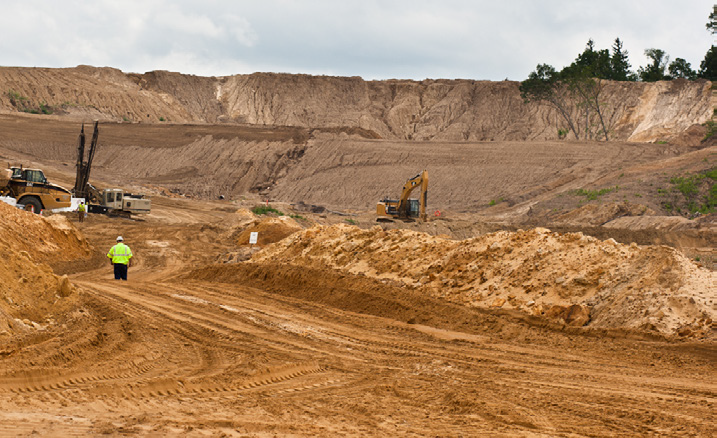Sand is an important component of the soil matrix which takes years to be formed but extracted in a matter of days.
Each year, huge tons of sand are excavated from various places as raw materials to aid in the construction of developmental projects. Different categories of sand have unique properties used in different industries such as: construction, metal production, chemical production, ceramics and refractories, glass manufacturing, foundry industry, paint and coatings, filtration and water production, oil and gas recovery and recreational products
Despite the significance of this resource in many industries, sand mining has significant environmental consequences for the mother earth, which eventually poses safety risks to people. Extraction of sand is being done excessively without considering the impact it has on the environment. In most cases, over exploitation of the soil leaves behind deep pits on river banks whilst widening rivers. The effects of sand and gravel mining results in disturbances to ecological balance, as it is closely associated with land use change and river degradation. Construction activities in newly developed areas is creating a demand for sand abstraction activities.
The activities of sand mining are resulting in the destruction of vegetation, agricultural and non-agricultural lands. In Zimbabwe, sand mining activities have led to the reduction of agricultural land. The effect of this is a situation where many people face food security problems. The extraction of sand along rivers has led to the destruction of several hectares of fertile land every year. Similarly, a lot of valuable timber resources and wildlife habitats have been lost due to the activities of sand mining.
Sand miners have created gullies on agricultural lands and forest reserves in several places. Traditional and commercial fishing, is also affected through destruction of benthic environment- an ecological region at the lowest level of the water body. Sand mining has direct impacts on climate change, through Greenhouse Gas (GHG) emissions generated from the transport of sand over long distances from where the sand is quarried. The activities of sand mining are directly responsible for the destruction of social amenities such as roads, electricity poles, telephone masts, underground pipes and other public infrastructure. Apart from this, sand abstraction activities have brought land use conflicts due to fighting for claims of sand deposits.
Regulatory and Policy Implications
In Zimbabwe a regulatory system governing all mining activities, including sand abstraction, has been designed to meet SDG 15 which aims at combating desertification as well as reversing land degradation. Section 3 of the Statutory Instrument 7 of 2007 for EIA and Ecosystem Protection prohibits the excavation, removal, possession or licensing the removal of clay or sand deposit for commercial purposes without a license issued by the Environmental Management Agency (EMA). According to the SI; “Any person who wishes to extract, excavate, possess or license the removal of sand or clay shall apply to the Agency in Form EMA A and the application shall be accompanied by an appropriate application fee.” The applicant is required to engage the local authority and the local inspector and develop a detailed excavation and environmental rehabilitation plan for submission to the Environmental Management Agency for review before any extraction or excavation is done.

Strategic Approach to sustainable sand mining
Sand mining is causing multiple adverse effects to the environment. The following measures can be implemented to reduce the negative environmental effects of sand mining.
Reducing negative impacts of sand extraction
Sand excavation should be done in a way that limits negative environmental impacts through implementing Environmental Management Plans and using clean technologies for sand mining operations designed to minimize adverse impacts on the environment.
Reducing sand consumption
Substitutes for sand or optimizing the use of existing buildings and infrastructure represent only a few steps that can be made to reduce sand consumption. Different substitutes can be used for in selected application such as crushed granite, barite powder, quarry dust, etc.
Law enforcement and monitoring
Government and public authorities regulating sand abstraction should only permit sand mining operations based on license in accordance with Statutory Instrument 7 of 2007 for EIA and Ecosystem Protection. Regular monitoring and inspection should be done by responsible authorities in sand abstraction hot spots to ensure that sand miners fulfill all obligations arising from environmental laws and regulations.
Setting taxes on sand extraction to create incentives on alternatives
Sand is seen as a cheap resource, therefore to attain a profit, land developers need to only cover the exploitation cost (costs of equipment, labor, fuel, and transport). Overexploitation of sand will continue unless sand abstraction is correctly priced and taxed so that other options become economically viable.